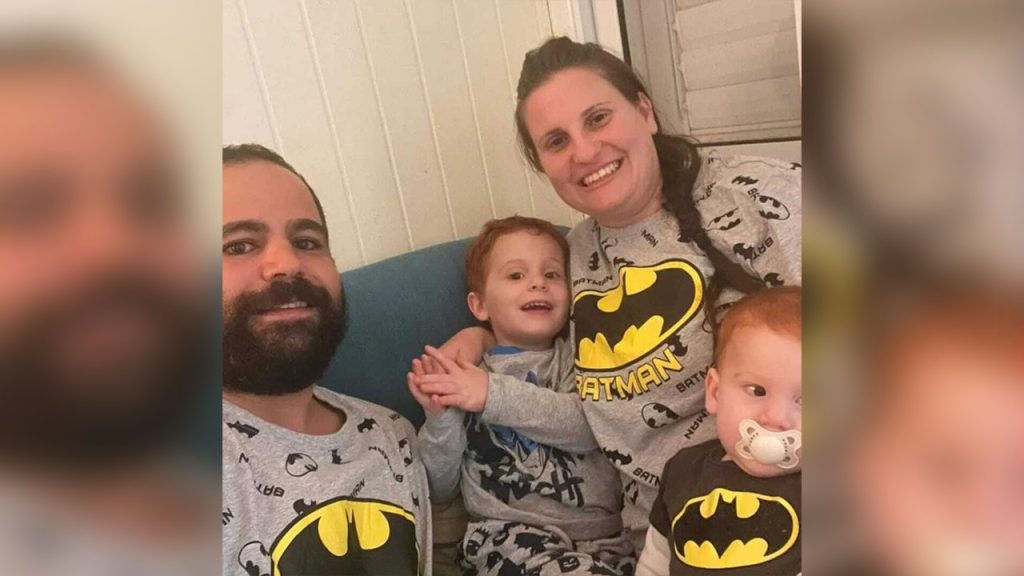Yarden Bibas’s return to Israel after 480 days of captivity in Gaza marks a bittersweet moment for the nation. While his freedom is celebrated, his wife, Shiri, and their two young children, Ariel and Kfir, remain in Hamas captivity, their fate shrouded in uncertainty and marked by “grave concerns” about their well-being. This partial reunion underscores the complex and agonizing reality of the hostage situation resulting from the October 7th Hamas attacks, where families are torn apart, and the joy of release is tempered by the continued suffering of those still held captive. Bibi’s return has sparked renewed calls for the release of all hostages, particularly his family, who have become a poignant symbol of the devastating human cost of the conflict.
The release of Yarden Bibas, along with American-Israeli Keith Siegel and French-Israeli Ofer Kalderon, represents the fourth round of hostage releases under the ongoing ceasefire agreement between Israel and Hamas. While these releases offer a glimmer of hope, they also highlight the ongoing struggle to bring all captives home. The IDF has reiterated its commitment to securing the release of the remaining 79 hostages, emphasizing that their plight remains at the forefront of their efforts. The process, however, is fraught with complexities, demonstrated by the shift in the release procedures to ensure the hostages’ safe passage, a direct response to the earlier chaotic scenes of crowds mobbing returning captives. This adjusted approach demonstrates the delicate balancing act required to navigate the sensitive political and security landscape while prioritizing the hostages’ well-being.
The Bibas family’s story has become emblematic of the human tragedy of the conflict. The image of Shiri Bibas clutching her two young red-headed children, Ariel and Kfir, has resonated globally, serving as a stark reminder of the innocent lives caught in the crossfire. The use of the color orange in campaigns advocating for their release further underscores their vulnerability and the desperate hope for their safe return. The fact that Kfir has spent his entire life, including both of his birthdays, in captivity poignantly illustrates the prolonged suffering endured by the youngest victims of this conflict.
Hamas’s use of hostage videos, including one featuring Yarden Bibas, adds another layer of cruelty to the ordeal. These videos, often depicting hostages under duress and making coerced statements, are a form of psychological warfare aimed at undermining morale and exerting pressure. While Hamas initially claimed the Bibas family had been killed in such a video, they later included them on the list of hostages to be released in the first phase of the ceasefire, raising questions about their true intentions and further deepening the anguish for their loved ones.
Yarden Bibas’s family expressed mixed emotions upon his return, acknowledging the joy of his release while emphasizing the incompleteness of their family without Shiri, Ariel, and Kfir. This sentiment reflects the collective national sentiment in Israel, where the celebration of individual releases is tempered by the ongoing concern for those who remain captive. The government, through statements by Prime Minister Netanyahu and President Herzog, has affirmed its continued commitment to securing the release of all hostages, recognizing the profound impact this ordeal has on the nation’s psyche.
The ongoing hostage situation remains a significant challenge in the path towards resolution. The release of Keith Siegel, the first Israeli-American hostage freed, brings some relief, but the fact that six American citizens, two of whom are believed to be alive, remain in Gaza underscores the international dimension of this crisis. The complexities of the negotiations, coupled with Hamas’s history of using hostages as political pawns, present a formidable obstacle. The international community’s continued pressure and engagement are crucial in ensuring the safe return of all remaining hostages, bringing closure to the affected families and a step towards healing the deep wounds inflicted by this conflict. The Bibas family, in particular, symbolizes the urgent need for continued efforts until all hostages are reunited with their loved ones.


